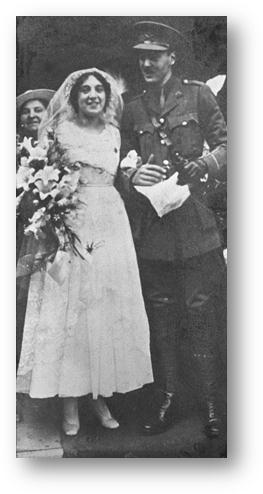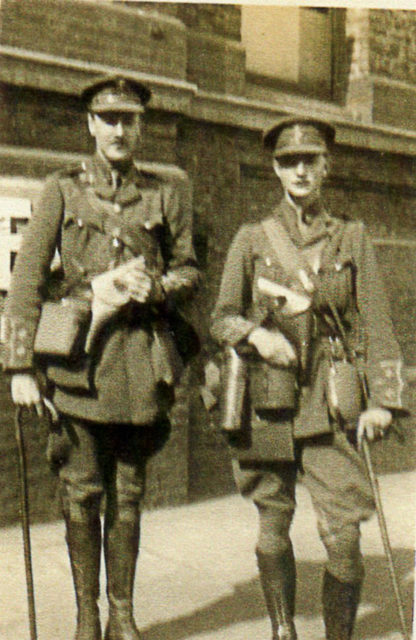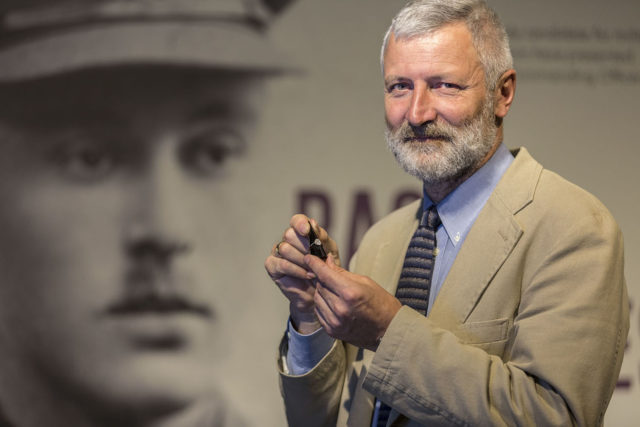Possibly the most romantic item that survives from the first tank engagement of all time is turning heads 100 years after it was created.
The ring was made from a shard of glass removed from the face of Lt Basil Henriques on 15 September 1916 during the fighting at The Somme in World War One. He later presented it to his wife Rose who he had married months earlier and now it is in a new, prominent display at The Tank Museum in Bovington, Dorset.

Henriques was looking through a periscope during his Mk I tank’s first outing when artillery fire struck a glass prism that shattered, sending splinters into his face. Miraculously he was not blinded and after medics removed the glass pieces he kept the largest and had it mounted in a gold ring.

Henriques was a prominent Jew who dedicated his life both before and after the war to social work, and particularly the social welfare of children. He was knighted in 1955 and a road in Whitechapel, London, is named after him. The ring was later given to the museum by his widow.
The unique item of jewellery will be taken to Trafalgar Square in London on the anniversary of the first action along with a Mk IV tank – a working replica made for the film War Horse.

David Willey is the curator at the museum which has the only genuine Mk I tank in existence and the finest collection of WWI vehicles and exhibits in the world.
He said: “At the museum the tanks are always going to have a presence and draw but objects like this ring help tell the personal stories of the men and their experiences. Henriques joined the new tank unit with his old school friend George Macpherson who was killed on the day of the first attack. He later wrote movingly about how lonely he was without George who was a ‘marvellous companion’ and he felt ‘blank’ and ‘empty’ without him. The first tank attack was not a great success, many tanks broke down and others lost their way, but a few made a real difference.
For us now it seems amazing that after a day of such terror, confusion and loss Henriques was able to think of his new wife and make a present to her out of something that had nearly blinded him. This is one of our smallest objects on display but certainly one of the most moving and one of the most popular.

We have researched the lives of eight of these early tank pioneers for our exhibition that marks the centenary, and their personal stories can’t help but powerfully bring home the nature of this new type of war. Tanks were developed in great secrecy and the first volunteer crews – including Henriques and Macpherson – didn’t know what they were actually volunteering for. Conditions were awful inside with eight men to operate them in temperatures of 50 degrees C (122F) with a deafening noise, a top speed of three mph at the very best – and drawing German fire. Carrier pigeons were taken on board to relay messages but often the carbon monoxide in the fumes left them too debilitated to fly. Two out of every ten tank crew were killed and many others were wounded and it’s important we remember their contribution.”
The museum’s replica Mk IV will be in Trafalgar Square on the morning of September 15 and in Horse Guards parade during the afternoon.
During the Great War ‘Tank Banks’ were popular around the country; politicians from across the House as well as celebrities climbed on tanks in front of huge crowds to give morale-boosting speeches.
On September 17, Bovington is hosting a Tank 100 event to commemorate the centenary of the tank, the sacrifice of Britain’s tank soldiers and Bovington’s role in armoured warfare.
The centenary event on September 15 is being supported by the World of Tanks publisher and developer Wargaming. All images provided by the author.
